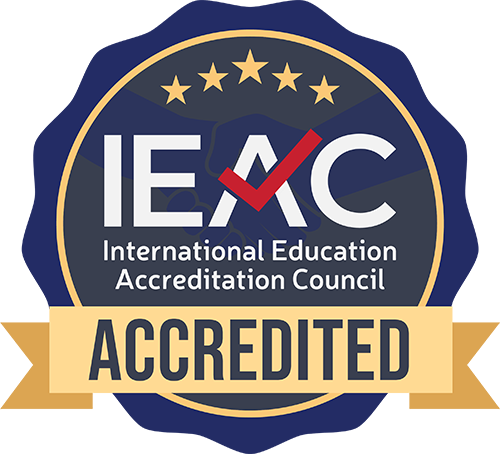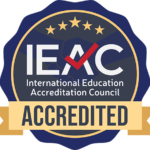
Often, you will find the need to use someone else’s ideas to justify what you are writing in your essay or assignment. You may have found these ideas from a book, magazine article, television or radio program, newspaper report or workshop you attended.
Using it because it is of interest to you and your audience is called “referencing”. If you use a reference, such as a quote or an idea or a work correctly, you could be accused of plagiarism.
It is, therefore, necessary to ensure that you take all precautionary steps to reference your material correctly and accurately. Besides, you would not want others to quote you and not give you credit for it, would you?
Warnborough favours the Harvard style of bibliographical citation. Below, you will find a series of examples and guidelines as to how you can reference different works appropriately. This spans everything from books to websites. This is by no means an exhaustive selection and not every single type of referencing can be covered. However, we feel the examples provided will allow your audience to find out clearly and succinctly where and how you got your information from, and follow up on that if they wish to. The examples used here may not refer to actual published texts. Do note especially in the examples given:
- The order.
- Where there are capital letters.
- What is in italics (underlining is used if the assignment is handwritten or typed on a conventional typewriter. Use italics if a wordprocessor is used.)
- Punctuation
A common form of Harvard Style-referencing is just a single list at the end of the written work, providing details of all items consulted. This may either be termed references or bibliography. This guide will assume a single list will be the standard practice and the word bibliography is used.
Sometimes, there may be a need for a separate reference list and bibliography. In this case the reference list will be called references and will only include items actually referred to in the assignment. The bibliography in this case will then simply be a listing of reading which is relevant, but not referred to in the text. There are variations on this, so please consult your Tutor/Mentor for clarification on your intended style.
Arrange the bibliographic entries alphabetically according to the surname of the authors, and for the same author, in order of dates.
The layout for citing any book in the bibliography should be as follows:
Author/editor surname and initials. Year of publication, in brackets. Title of book, italics. Edition. Place of publication and publisher.
e.g. Goldbum, M. (1989) Victorian Décor Restoration. 2nd ed. London: Penguin.
When cited within the body of the essay, if the author’s name occurs naturally in the sentence, just put the year in brackets e.g. “Goldblum (1989) describes Victorian curtains”, otherwise put both the name and year in brackets at the end of the sentence, e.g. “Victorian curtains were found to be relatively easy to restore.” (Smith, 1979).
If the author has published more than one document in the same year, distinguish between them by adding a,b,c etc after the date and ensure that they are all listed in the bibliography e.g. (Goldblum, 1989a).
These are cited in the bibliography as follows:
Author surname and initials. Date of publication, in brackets. Title of article, in inverted commas. Name of periodical, in italics. Volume number, in italics. Part number, in brackets. Comma, page numbers.
e.g. Goldblum, M. (1998) “Orthodontic practices in Western Sumatra”, American Journal of Dentistry, 22 (2), 28 – 33.
When citing the article in the body of the essay, refer to (Goldblum, 1998).
These are cited in the bibliography as follows:
Author surname and initials. Year of acceptance, in brackets. Title, italics. Degree Institution.
e.g. Smith, J. (1984) The use of the semi-colon in medieval Hungarian drama. PhD Thesis. University of Whitstable.
In the body of the essay, refer to (Smith, 1984).
This is cited in the bibliography as follows:
Author surname and initials. Year, in brackets. Title, italics. Details of what report was for. Unpublished.
e.g. Smith, J. (1985) Minor poems of minor Hungarian poets. Report to the English Association for the Appreciation of Little Known Poetry. Unpublished.
In the body of the essay, refer to (Smith, 1985)
In the bibliography at the end give:
The name of the department responsible for the publication followed by the name of the country in brackets, if outside the UK. Date in brackets. Title, italics. If the report is more familiarly known by the name of the chair person, include this in brackets after the title. Place of publication. Publisher.
e.g. Department of Health (1991) Better services for the mentally handicapped (The Smith report). London: HMSO
In the body of the essay, the most consistent form of citation would be to cite the Department and year, so your reader can find it easily in the bibliography at the end of the essay. You may find it easier to abbreviate the Department name in the text , e.g. (DfEE, 1995).
In the bibliography at the end give:
the author, editor, chairman (surname and initials) or body responsible for the document. Date in brackets. Title, italics. Place of publication. Publisher. If the body responsible for producing the document have also published it, then name them twice as in the second example below:
e.g. Guilbert, J. (1987) Educational handbook for health personnel. Geneva: World Health Organisation.
e.g. United Kingdom Central Council for Nursing and Midwifery (1986) Project 2000: a new preparation for practice. London: UKCC.
In the body of the essay, these can be referred to as(Guilbert, 1987) or (UKCC,1986)
In the bibliography at the end, give:
Title, italics. Date in brackets. Person(s) or body responsible for its production. Place of production or publication. Format.
e.g. My left foot (1990) Screenplay by…, based upon a book by…, directed by… London: Palace productions. Video.
In the body of the essay, refer to it as (My Left foot, 1990)
For off-air recordings give:
Broadcast company. Year in brackets. Title of Program italics. Off-air recording, Transmission date. Video.
e.g. Channel Four. (1992) Cutting edge. Neighbours. Off-air recording. Tx. 4 May 1992. Video.
In the body of the essay, refer to as (Channel Four, 1992)
In the case of a film as set out in example above, My Left Foot.
e.g. Shirley Valentine (1989). Based on a play by Willy Russell, directed by Lewis Gilbert. Off-air recording. Video.
In the body of the essay, refer to as (Shirley Valentine, 1989.)
In the bibliography at the end, give:
Author, surname and initials (if given), otherwise use newspaper title. Year, in brackets. Title of article. Name of newspaper, italics. Date of issue, Page number(s).
e.g. Soap, J. (1992) “The trends in bubble bath production”, Financial Markets, 6 March, 18 -19.
In the body of the essay refer to it as (Soap, 1992)
e.g. Sunday Times (1993) “Students improve quality of written work”, Sunday Times, 5 May, 17.
In the body of the essay refer to it as (Sunday Times, 1993).
If you are using a direct quotation, make this clear, put it in inverted commas, and give the page reference.
e.g. :…As Smith (1978) says ” To know all is to forgive all” (p33)
This format also applies when refering to a citation within someone else’s work. e.g. “..Smith says that to know all is to forgive all (cited by Green and Jones, p47)”.
Then mention Green and Jones in your references. This indicates that you have come across the quotation in the book by Green and Jones, so therefore there is no problem in including this in your reference list. As you have not read the book by Smith, it would be misleading to quote this in your references. There is nothing to stop you keeping the details of Smith’s book separately should you or your tutor wish to follow it up in the future.
If the author/editor’s surname is double barrelled with no hyphen, use the final surname in your alphabetical list.
e.g. if the author is J Wynn Smith, cite him/her as Smith, J Wynn.
If the author/editor’s surname is hyphenated, use the first surname in your alphabetical list.
e.g. if the author is J Wynn-Smith, cite him/her as Wynn-Smith, J.
If there are two authors, give both names.
e.g. Smith, J. and Jones, R.
If there are three or more authors, quote all three names the first time you cite them in the body of the essay, then abbreviate this by using et al. Give all three name in the reference list at the end.
e.g. Smith, J., Jones, R. and Green, D. becomes Smith, J. et al.
If the work is a translation, put the name of the translator(s) in between the name of the author and the title, italics.
e.g. Smith, J. (tr Jones, R. and Green, D. 1972) The finer points of Hungarian grammar …
Much debate still rages over Internet referencing. However, standards are slowly emerging on how to cite information from, and references to, e-mail, mailing list messages and web pages. The following guidelines apply for web pages:
Indicate the exact URL of the web page and the date you visited it
Do not split the URL over a line. If this is not possible, do so after a forward slash.
Author/Editor. Year (‘No date’ if date of publication not given in source). Title (underlined or use italics) [online] (indicates types of medium, use for all internet sources). Place of publication: Publisher (publisher in traditional sense or organistion responsible for maintaining sites on the Internet). Available from: URL. [Accessed date] (date on which you viewed or downloaded the document).
e.g.: Berman, T., 2018, Beyond the Last Touch: Attribution in Online Advertising [online]. Philadelphia: University of Pennsylvania. Available from: https://repository.upenn.edu/marketing_papers/346/ [Accessed 13 January 2020]



